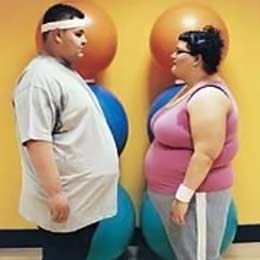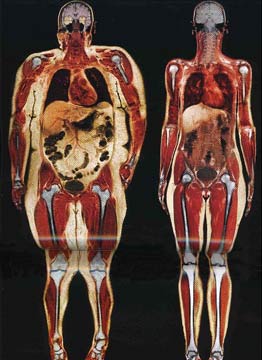- Like
- SHARE
- Digg
- Del
- Tumblr
- VKontakte
- Flattr
- Buffer
- Love This
- Save
- Odnoklassniki
- Meneame
- Blogger
- Amazon
- Yahoo Mail
- Gmail
- AOL
- Newsvine
- HackerNews
- Evernote
- MySpace
- Mail.ru
- Viadeo
- Line
- Comments
- Yummly
- SMS
- Viber
- Telegram
- JOIN
- Skype
- Facebook Messenger
- Kakao
- LiveJournal
- Yammer
- Edgar
- Fintel
- Mix
- Instapaper
- Copy Link
Body Fat Percentage is the Amount of Body Fat In Relation to Total Body Weight

There are many ways to measure your body fat percentage. Once you determine your own percentage, you can then figure out how much body fat is stored throughout your body.
However, your percentage of body fat tells you nothing about where the body fat is primarily stored but it does give you a good starting point to begin a fitness program and track your progress.
Your Body Has Fat For 2 Primary Reasons
Essential Body Fat
Most likely you have not heard about essential body fat. Essential body fat is required for life. Essential body fat is the fat which our body needs for normal functioning. It is stored in the bone marrow, major organs, intestines, muscles and tissues of the central nervous system (brain & spinal cord.)
The definition of percent body fat includes essential body fat which accounts for 10-12% of total body fat for females and 3-4% for males. Women have more essential body fat compared to men due to hormonal and child bearing issues.
S torage Body Fat
torage Body Fat
This is the fat we all want to lose. Our bodies store fat for energy as triglycerides. Groups of fat cells form adipose tissue which is primarily located subcutaneously (under the skin.)
You have a preset, genetically determined number of fat cells. These cells have a virtually limitless size. This means when you get fatter, your fat cells are expanding. Hyperplasia, or multiplying of fat cells has never been proven to exist.
Where our body stores the majority of sub-cutaneous body fat is in our genetic coding. The average person’s percent of body fat accounts for a very large energy source. Remember a gram of fat burned is 9 calories of energy. This means a pound of body fat is 3500 calories of energy.
The second type of storage body fat is visceral body fat. Visceral body fat is stored around the organs. Excessive visceral body fat can put pressure on your internal organs which is thought to be the root of many long-term health problems.
Keep in mind that any excess calories we consume can be converted to storage body fat. This includes excess calories from dietary fat, protein, carbohydrates or alcohol. Dietary fat accounts for a very large energy source. Remember a gram of fat burned is 9 calories of energy. This means a pound of body fat is equivalent to 3500 calories of energy.
The Definition of Percent Body Fat Tells your More Than Just Your Body Fat
If you know the definition of percent body fat you can use some simple math to easily determine your lean body mass or muscle mass.
Your lean mass is your muscles, body water, bones, and all other material which is not body fat. To have more lean body mass means your will have a higher metabolism, and burn more calories during the day at rest.
Take note, the percentage of body fat in your body tells you nothing about bone mass. Almost all body fat measurements use 2 compartment analysis. This means they estimate your fat, and everything else. A 3 compartment analysis will accurately estimate your bone mass, muscle mass, and body fat.
Articles to Help You Get Rid of Fat in Common Problem Areas
Choose a Problem Area Below:
Frequently Asked Questions
Question:
I have noticed that some people have very solid body fat while others have jiggly soft body fat. What is the difference between hard and soft body fat?
Answer:
Regardless of whether the body fat is solid or soft, it is still body fat. The hardness or softness of the body fat could be due to many factors including, tightness of the skin, water retention or even genetic conditions. Whether you are looking to reduce hard or soft body fat, the method is the same.
About Michael Behnken
Mike Behnken is a personal trainer who holds multiple NASM certifications and a MS in Exercise Science. Mike loves fitness, travel, and photography among many other interests.


 torage Body Fat
torage Body Fat